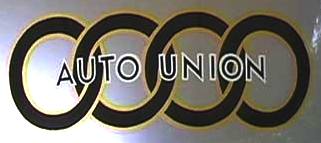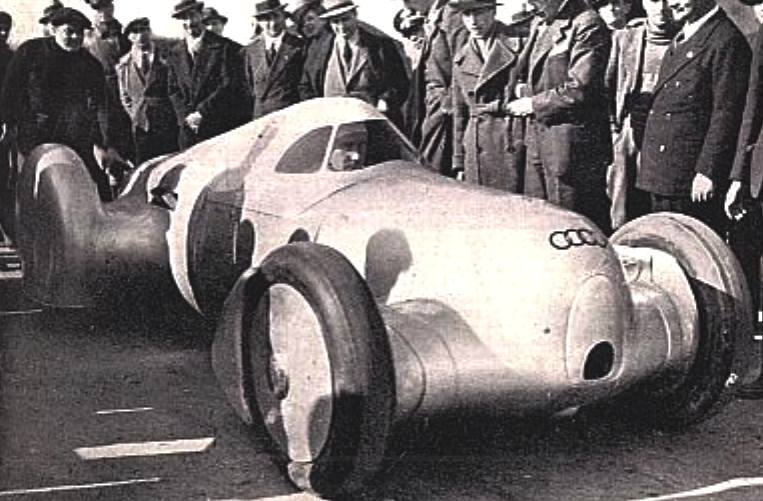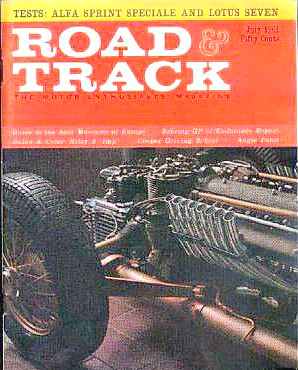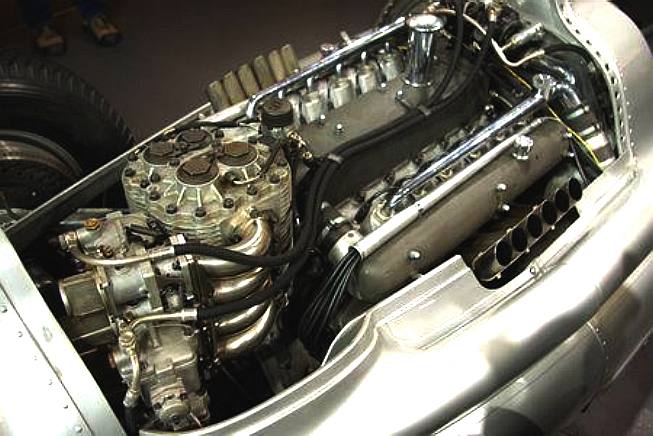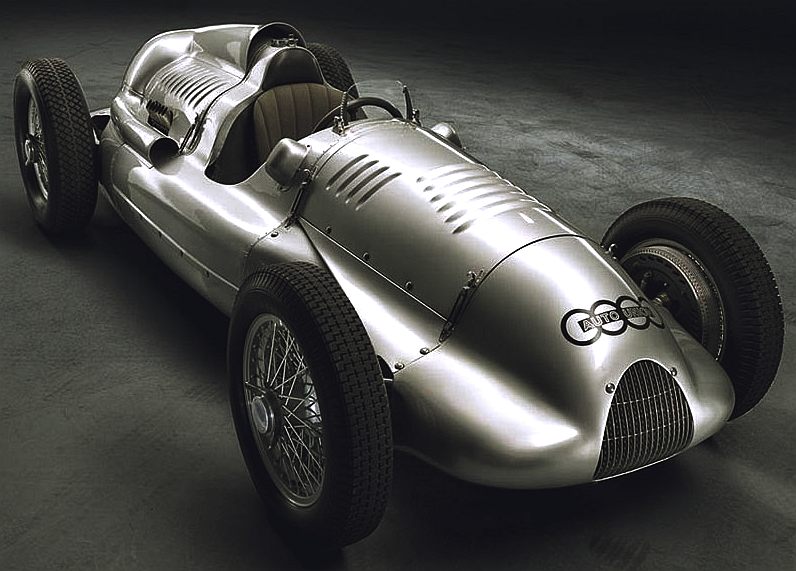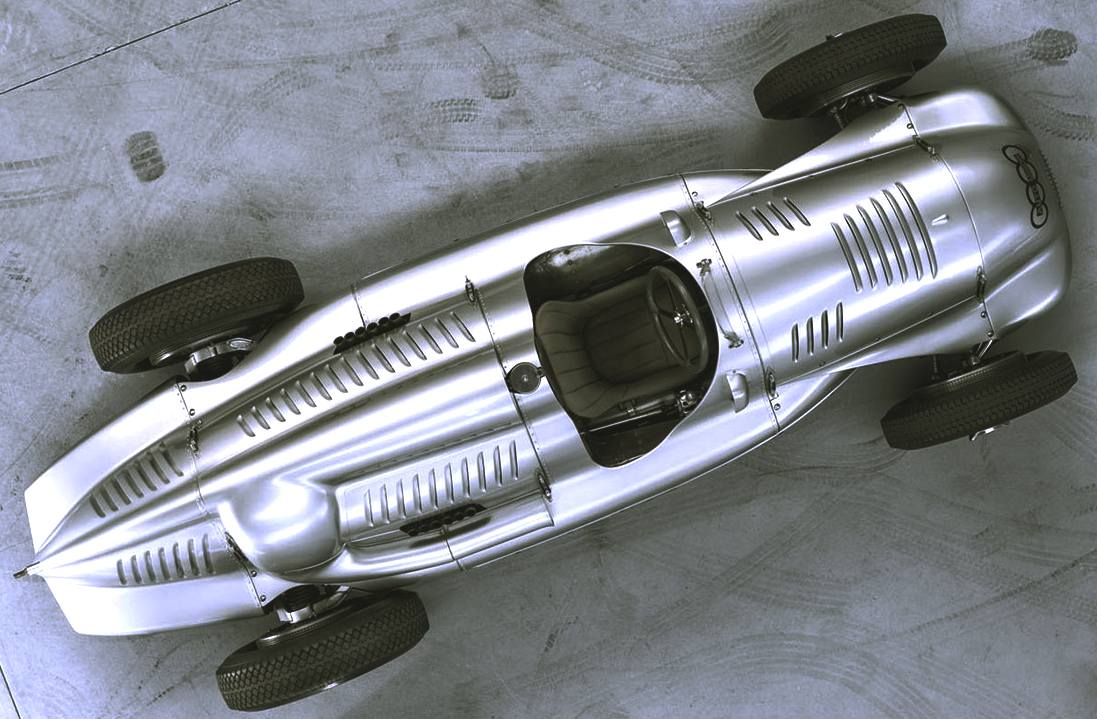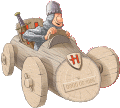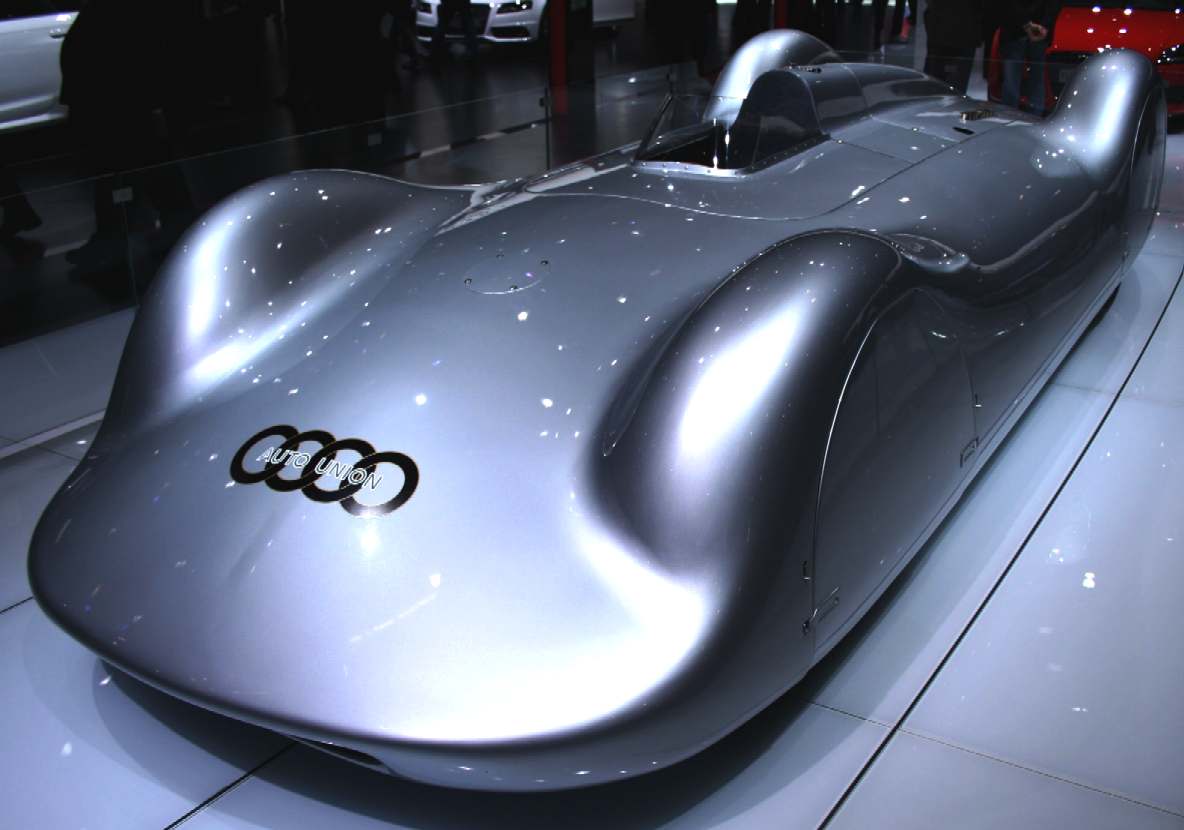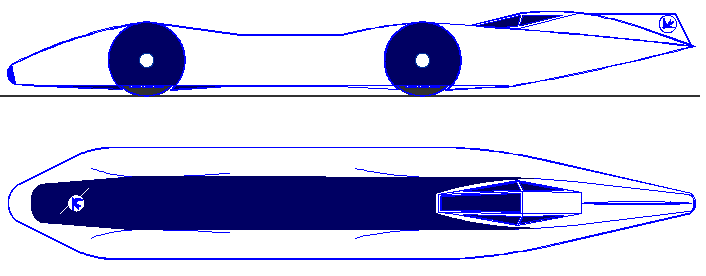|
AUTO UNION MASTERPIECES
|
|
|||||||
|
HOME | AUTOMOTIVE | BLUEPLANET | ELECTRIC CARS | ENERGY | INSURANCE | INDEX | SOLAR CARS |
||||||||
|
Auto Union was a joint venture of four German automobile manufacturers, established in 1932 in Zwickau, Saxony, during the Great Depression.
The trademark of Auto Union was a symbol of four overlapping rings, symbolizing the four member companies (all four in a line, in an attempt to avoid confusion with the 5 Olympic rings). The trademarks and company names of the member companies - Horch, Audi, DKW and Wanderer - were continued; the four ring logo was used only in racing. The four ring logo of Auto Union is still a trademark, and now used by Audi. They continued to market the two-stroke engined DKW brand until 1964.
1936 Auto Union Wanderer
It is best known for its racing team (Auto Union Rennabteilung, based in Zwickau), which was the main opponent of Mercedes-Benz in 1930s Grand Prix motor racing. The Silver Arrows of these two teams dominated not only 1930s car racing, but set records that would take decades to beat. For example, it took Formula One Grand Prix until the early 1980s to again reach the power levels of these cars.
The Auto Union racing cars
The Auto Union race cars were designed by the famous engineer Ferdinand Porsche; they were based an earlier design he had done using a mid-engined layout similar to the famous 1923 Benz Tropfenwagen, or "Teardrop" aerodynamic design. (That unique car was built under the direction of Max Wagner, who was now at Daimler-Benz, and was raced by his current business partner, Adolf Rosenberger.)
The mid-engined cars, where the drivers sat in front of the engines, were unusual; it took 30 years until this concept, made famous in these cars, became generally adopted in motor racing. This was mostly because the cars were said to be hard to master, which was in part due to the swing axle rear suspension design initially adopted by Porsche (relatively advanced for its day, it is now utterly obsolete because of its many problems), although other factors (such as simple unfamiliarity with the very different handling characteristics) were also involved in creating that reputation.
Cover of Road & Track magazine showing Auto Union V16 engine in a tubular chassis
The cars used supercharged engines that eventually produced almost 550 horse-power (which also contributed toward the handling difficulties, as it promoted the oversteer which the cars already had in abundance). The engine was originally the V16 engine that Porsche had started designing earlier; when, starting in 1938, the maximum engine displacement for Grand Prix cars was limited to 3 litres for blown engines, it became a V12. It was originally designed to 6 litre specifications, but would start at 4,360 cc and 295 bhp. It had two cylinder blocks, inclined at an angle of 45 degrees, with a single overhead camshaft to operate all 32 valves. The engine was designed to provide optimum torque at low engine speeds. (Bernd Rosemeyer later drove one around the Nürburgring in a single gear, to prove the engine was flexible enough to do it!)
The suspension would be all-independent but, unlike the Mercedes, would use parallel trailing arms and torsion bars at the front, while at the rear it initially used swing half-axles and a transverse leaf spring, the latter eventually being replaced by torsion bars, with radius arms added to absorb the torque. For the 3-litre V12 car, the rear suspension would be replaced with a de Dion suspension, following the lead of Mercedes-Benz but it was too late to do anything about the reputation the cars had gained.
The fuel tank was located in the center of the car, directly behind the driver (who would be placed well towards the front), so that the car's front-rear weight distribution would remain unchanged as the fuel was used - the exact same location used in modern open-wheel racing cars, and for the same reason. The chassis tubes were initially used as water carriers from the radiator to the engine, but this was eventually abandoned after they often sprung small leaks.
Much has been written about the difficult handling characteristics of this car, but its tremendous power and acceleration were undeniable - a driver could induce wheelspin at over 100 mph! A specialized hill climbing version of the car, equipped with dual rear wheels on each side to provide the traction needed to transfer this power, was built.
V16 Auto Union type 'D' hill-climb car with twin rear wheels
Additional work was needed on the car's cornering behavior; accelerating out of a corner would cause the inside rear wheel to spin furiously. This was much abated by the use of a Ferry Porsche innovation, a ZF manufactured limited slip differential, introduced at the end of the 1935 season. The body was subjected to strenuous testing in the wind tunnel of the German Institute for Aerodynamics.
Stuck also managed to break speed records, reaching 199 mph (320 km/h) on an Italian autostrada in a closed-cockpit streamliner. Lessons learned from this streamlining were later applied to the T80 land speed record car.
Please click on the links above to find out about these famous automotive makers. If your company is not included and you would like to be listed, please let us know.
UK VEHICLE INSURANCE ONLINE A - Z
No matter what car, van or bike you drive, we're all looking for great value and quality in our UK motor insurance? But who is the best - who is the cheapest and who offers the great service in the event of a claim?
See the insurance companies below who claim to offer competitive cover at sensible prices, our guide to the jargon and tips for cutting your quote - Good Luck:-
A taste for adventure capitalists
The world's fastest electric car: 350mph + using energy from nature. Featuring built in battery cartridge exchange, charged using renewable solar energy. Sponsors sought for the 2016 season.
|
||||||||
|
BLUEPLANET BE3 ELECTRIC | EDUCATION | ELECTRIC CYCLES | SOLARNAVIGATOR |
||||||||
|
The
content of this website is copyright © 1991 and 2013 Electrick
Publications. All rights reserved. The bluebird logo |
||||||||
